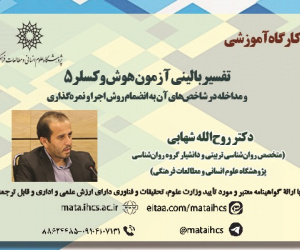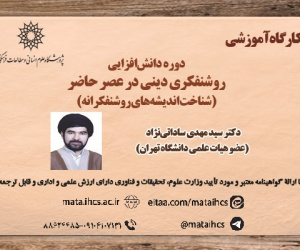تحلیلی بر تأثیرات شاخص های کیفیت منظر بر طراحی بوم شناسانه شهر در چارچوب انرژی های تجدیدپذیر، مطالعه موردی: شهر پردیس (مقاله علمی وزارت علوم)
درجه علمی: نشریه علمی (وزارت علوم)
آرشیو
چکیده
هدف از انجام پژوهش حاضر، شناسایی و سنجش میزان تأثیرات مستقیم شاخص های کیفیت منظر بر طراحی بوم شناسانه، با استفاده از انرژی های تجدیدپذیر در فضاهای سبز شهر پردیس بوده است. روش تحقیق توصیفی - تحلیلی و از نظر هدف کاربردی بود. جامعه آماری پژوهش شامل کارشناسان، مدیران و فعالان حوزه طراحی بوم شناسانه شهری بود که با توجه قابلیت سنجش روش PLS- Smart با حجم نمونه کم، تعداد 34 نفر با روش نمونه گیری غیرتصادفی انتخاب شدند. برای رتبه بندی متغیرهای شناسایی شده از روش تاپسیس فازی با طیف ۵گانه لیکرت در Excel و برای بررسی رابطه کیفیت منظر و طراحی بوم شناسانه شهر از روش معادلات ساختاری تفسیری در نرم افزار PLS- Smart استفاده شد. پایایی ابزار با ضریب آلفای کرونباخ 798/0 و پایایی ترکیبی با ضریب 876/0 مورد تأیید قرار گرفت. نتایج تحلیل ها نشان داد که عامل کیفیت منظر بر طراحی بوم شناسانه شهری تأثیر مستقیم دارد. علاوه براین شاخص محیط زیستی با متغیرهای محیط شهری و شاخص زیست محیطی به ترتیب با متغیرهای محیط شهری به میزان 65 %، اقتصاد شهری به میزان 60 %، زیبایی شناختی به میزان 55 %، فرهنگی-اجتماعی به میزان 55% و با متغیر معنایی- ادراکی به میزان 45% رابطه مستقیم و مثبتی را نشان داد. در این پژوهش ارتباط مستقیم تأثیر شاخص های کیفیت منظر و طراحی بوم شناسانه با استفاده از انرژی های تجدیدپذیر در شهر پردیس با استفاده از FUZZY و Smart-PLS مورد سنجش قرار گرفت.An Analysis of The Effects of Landscape Quality Indicators on the Ecological Design of the City in the Framework of Renewable Energies, Case Study: Pardis City
The purpose of conducting this research; Identifying and measuring the direct effects of landscape quality indicators on ecological design, using renewable energy in the green spaces of Pardis city. The research method is descriptive-analytical and practical in terms of purpose. The statistical population of the research included experts, managers and activists in the field of urban ecological design, who were selected by non-random sampling method due to the ability to measure the Smart-PLS method with a small sample size. To rank the identified variables, fuzzy TOPSIS method with 5-point Likert scale was used in Excel, and to examine the relationship between landscape quality and ecological design of the city, interpretive structural equation method was used in Smart-PLS software. The reliability of the questionnaire is confirmed with Cronbach's alpha values of 0.798 and the combined reliability of the variables at 0.876. The analysis results showed that landscape quality has a direct effect on urban ecological design. In addition, environmental index with urban environment variables and environmental index respectively with urban environment variables at the rate of 65%, urban economy at the rate of 60%, aesthetic at the rate of 55%, socio-cultural at the rate of 55% and with the semantic variable. 45% perception showed a direct and positive relationship. In this research, the direct relationship between landscape quality indicators and ecological design with the use of renewable energy in Pardis city was measured using FUZZY and Smart-PLS.







